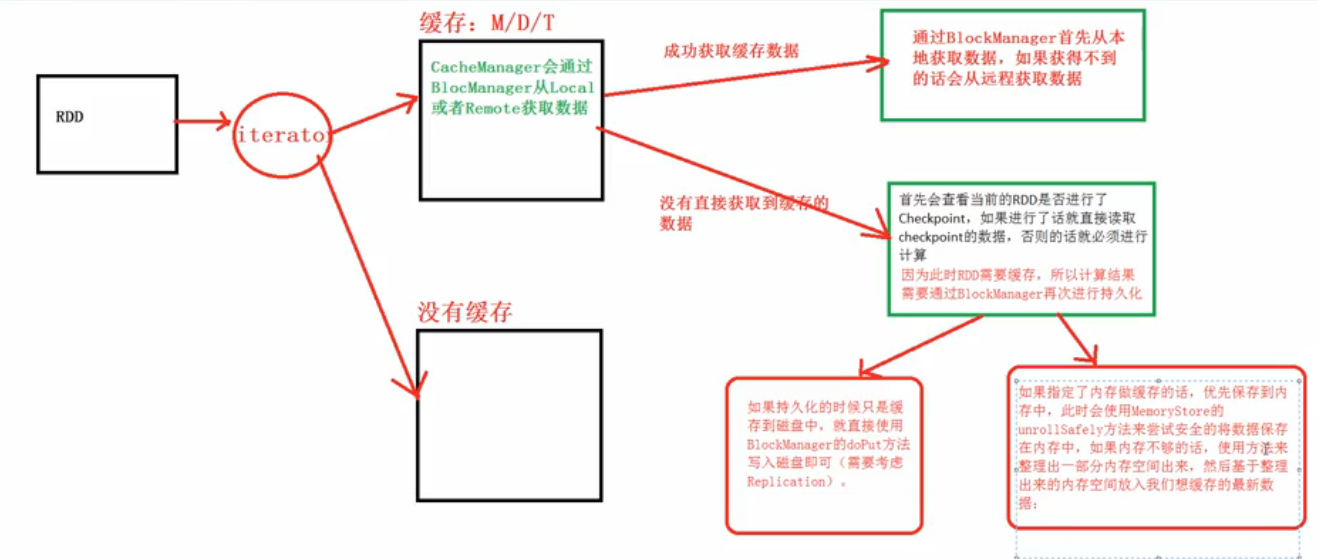
一:CacheManager分析:
1,CacheManager管理的是缓存,而缓存可以是基于内存的缓存,也可以是基于磁盘的缓存;
2,CacheManager需要通过BlockManager来操作数据;
3.当Task运行的时候会调用RDD的compute方法进行计算,而compute方法会调用iterator方法:
/**
* Internal method to this RDD; will read from cache if applicable, or otherwise compute it.
* This should ''not'' be called by users directly, but is available for implementors of custom
* subclasses of RDD.
*/
final def iterator(split: Partition, context: TaskContext): Iterator[T] = {
if (storageLevel != StorageLevel.NONE) {
SparkEnv.get.cacheManager.getOrCompute(this, split, context, storageLevel)
} else {
computeOrReadCheckpoint(split, context)
}
}二:CacheManager源码详解
1,Cache在工作的时候会最大化的保留数据,但是数据不一定绝对完整,因为当前的计算如果需要内存空间的话,那么Cache在内存中的数据必须让出空间,此时如何在RDD持久化的时候同时指定了可以把数据放在Disk上,那么部分Cache的数据就可以从内存转入磁盘,否则的话,数据就会丢失!!!
2,具体CacheManager在获得缓存数据的时候会通过BlockManager来抓到数据;
/**
* Get a block from the block manager (either local or remote).
*/
def get(blockId: BlockId): Option[BlockResult] = {
val local = getLocal(blockId)
if (local.isDefined) {
logInfo(s"Found block $blockId locally")
return local
}
val remote = getRemote(blockId)
if (remote.isDefined) {
logInfo(s"Found block $blockId remotely")
return remote
}
None
}3,如果CacheManager没有通过BlockManager获得缓存内容的话,此时会通过RDD的如下方法来获得数据:
val computedValues = rdd.computeOrReadCheckpoint(partition, context)上述方法首先会查看当前的RDD是否进行了CheckPoint,如果进行了的话就直接读取CheckPoint的数据,否则的话就必须进行计算;计算之后通过putInBlockManager会把数据按照StorageLevel重新缓存起来;
4,计算之后通过putInBlockManager会把数据按照StorageLevel重新缓存的时候如果需要放在内存中






















 1843
1843











 被折叠的 条评论
为什么被折叠?
被折叠的 条评论
为什么被折叠?








